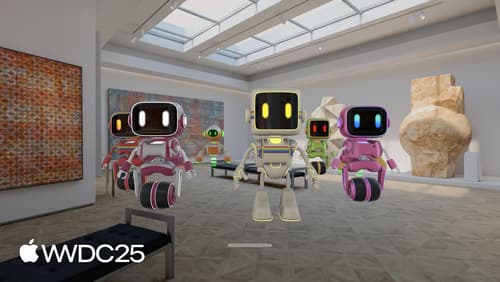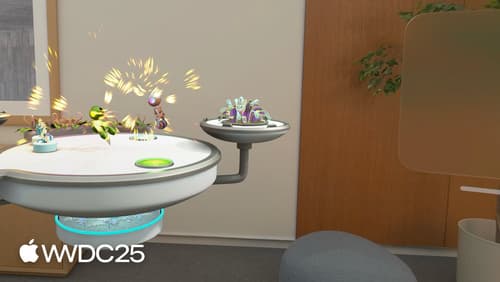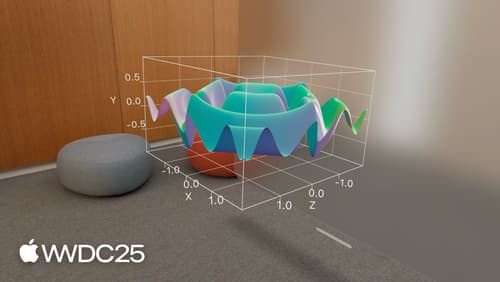geometry reader
Asked on 2025-09-22
1 search
The concept of "Geometry Reader" is discussed in the context of SwiftUI's spatial layout, particularly in the session titled "Meet SwiftUI spatial layout" from WWDC 2025. In this session, the Geometry Reader is extended to 3D, allowing for flexible sizing behavior in three dimensions. This is similar to how it functions in 2D, but now includes depth as a dimension, which can be resizable in certain contexts like volumes.
For more details, you can refer to the session Meet SwiftUI spatial layout (04:57).

Meet SwiftUI spatial layout
Explore new tools for building spatial experiences using SwiftUI. Learn the basics of 3D SwiftUI views on visionOS, customize existing layouts with depth alignments, and use modifiers to rotate and position views in space. Discover how to use spatial containers to align views in the same 3D space, helping you create immersive and engaging apps.

Better together: SwiftUI and RealityKit
Discover how to seamlessly blend SwiftUI and RealityKit in visionOS 26. We’ll explore enhancements to Model3D, including animation and ConfigurationCatalog support, and demonstrate smooth transitions to RealityView. You’ll learn how to leverage SwiftUI animations to drive RealityKit component changes, implement interactive manipulation, use new SwiftUI components for richer interactions, and observe RealityKit changes from your SwiftUI code. We’ll also cover how to use unified coordinate conversion for cross-framework coordinate transformations.

Bring Swift Charts to the third dimension
Learn how to bring your 2D Swift Charts to the third dimension with Chart3D and visualize your data sets from completely new perspectives. Plot your data in 3D, visualize mathematical surfaces, and customize everything from the camera to the materials to make your 3D charts more intuitive and delightful. To get the most out of this session, we recommend being familiar with creating 2D Swift Charts.
